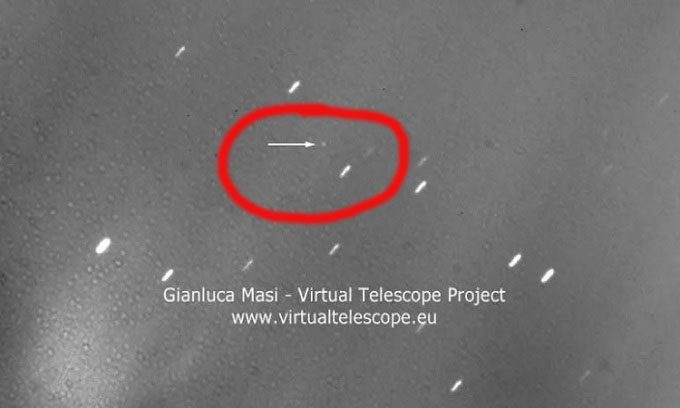Astronomers Capture Image of Falcon 9 Rocket’s Second Stage Set to Crash into the Moon in Early March Using Telescope in Italy.

Debris of Falcon 9 rocket as seen from Earth. (Photo: VTP)
The second stage of the Falcon 9 rocket has been drifting in space for about 7 years after launching from Cape Canaveral, Florida, USA, in February 2015 during the deployment mission of the Deep Space Climate Observatory (DSCOVR) by the National Oceanic and Atmospheric Administration (NOAA). After separating from the satellite, the second stage of the rocket had too little fuel to return to Earth and has been in a chaotic orbit influenced by the gravitational pull of both Earth and the Moon. Experts predict that this component is on a collision course with the Moon.
Bill Gray, the creator of software that tracks near-Earth objects, predicts that the 4-ton rocket stage is likely to crash into the Moon’s dark side near the equator on March 4, 2022, at a speed of approximately 9,173 km/h. On February 6, astronomers from the Virtual Telescope Project (VTP) captured images of the Falcon 9’s second stage using a remote-controlled 43 cm aperture telescope named Elena in Ceccano, Italy.
The VTP research team took the photograph when the rocket stage was 299,338 km away from Earth. Astronomer Gianluca Masi stated that the image taken with the Elena telescope had an exposure time of 60 seconds. The telescope specializes in tracking asteroid movements, making the Falcon 9’s second stage appear as a small dot with surrounding stars appearing slightly elongated. According to Masi, fluctuations in the brightness of the rocket stage indicate that it is spinning very rapidly.
The U.S. Department of Defense is monitoring over 27,000 pieces of debris in orbit, including old rocket parts and defunct satellites. However, many space debris pieces are too small to track. They move at extremely high speeds, posing a threat to spacecraft in orbit due to collision risks. Despite concerns about the increasing amount of space debris, experts believe that the upcoming collision between the SpaceX rocket debris and the Moon is not a cause for alarm.
“Objects of this size or larger collide with the Moon quite frequently and at significantly higher speeds. This is a 4-ton object crashing at a speed of 2.58 km/s. Speeds of 10 – 20 km/s are quite common for asteroids colliding with the Moon. Some stages of the Apollo spacecraft that fell to the Moon were even larger than the Falcon 9 debris,” Gray stated.





















































